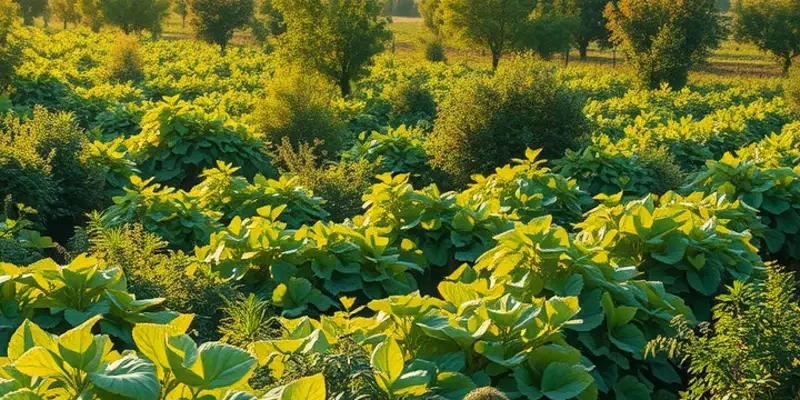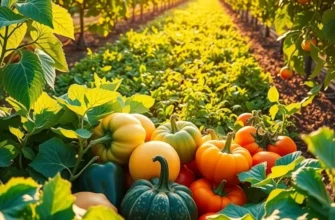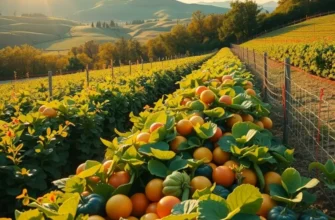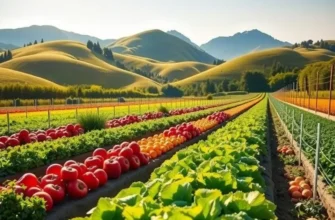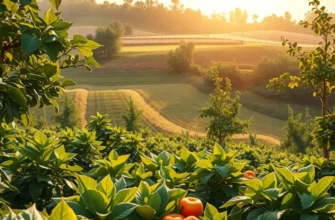Choosing the right foods can go a long way in protecting endangered habitats. By opting for sustainable options, we not only support our health but also nurture the ecosystems around us. This article explores how specific food choices can have a profound impact on our environment and the habitats that are at risk. Let’s delve into the foods that not only nourish us but also help safeguard the precious resources of our planet.
Plant-Based Power: The Impact of Choosing Local Vegetables and Fruits

Embracing plant-based eating isn’t just a boon for personal health—it also plays a pivotal role in environmental conservation. When we choose locally grown vegetables and fruits, we significantly reduce our carbon footprint. Transporting food over long distances involves considerable emissions. By opting for local produce, we cut down on the fuel required for transportation, thus lessening air pollution and greenhouse gas emissions.
Supporting local agriculture extends beyond environmental benefits. It encourages sustainable farming practices which contribute to preserving ecosystems. Small-scale, local farmers often use less intensive methods that rely heavily on organic farming. Organic practices reduce the need for synthetic fertilizers and pesticides, which can harm soil quality and local wildlife. Embracing organic farming also means promoting biodiversity, as these farms tend to favor crop rotations and polycultures, methods that help maintain ecological balance.
Seasonal eating is another principle tightly tied to local consumption. Eating fruits and vegetables in their natural harvest times reduces the energy needed for artificial growing conditions, like heated greenhouses. Plus, seasonal produce often requires shorter storage times, leading to reduced food waste. When you indulge in freshly harvested, ripe produce, you’re often greeted with superior taste and nutritional value—an added bonus to making eco-conscious choices.
Participating in community-supported agriculture (CSA) is an excellent way to support local business and environmental wellness. By subscribing to a CSA, consumers establish a direct relationship with farmers, often sharing in the risks and rewards of farming. This partnership can stabilize income for farmers and provide fresh, seasonal produce directly to consumers. Furthermore, it encourages transparency about where and how food is produced, which can lead to more informed eating choices.
Let’s delve into specific examples of staple crops that can contribute to habitat protection. Leafy greens like spinach and kale are typically hardy and require fewer inputs compared to agribusiness dinguses. Root vegetables like carrots and beets are also sustainable options; not only do they store well, reducing waste, but their cultivation supports soil health through reduced erosion.
When you choose to incorporate these elements into your diet, you’re actively engaging in a form of eco-smart meal planning that respects the planet. For further tips on minimizing food waste, which complements these sustainable practices, consider exploring this low-waste cooking and prep guide. By understanding and implementing these principles, you’re not just fueling your body with nutrient-rich foods, but you’re also supporting the systems that safeguard our planet’s precious ecosystems, one meal at a time.
Seafood Choices That Sustain: From Sustainable Fishing to Eco-Friendly Aquaculture
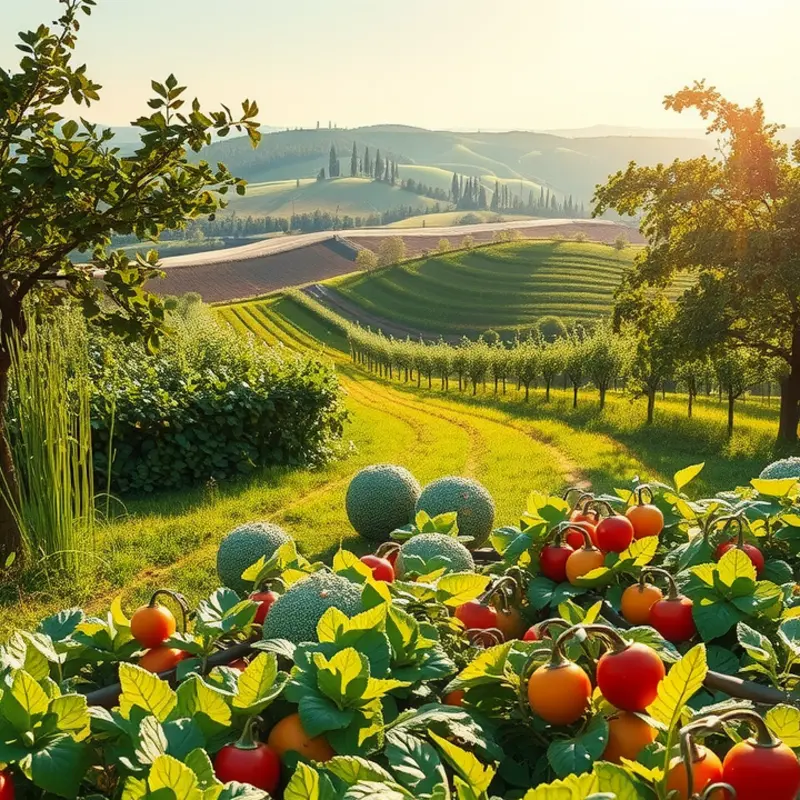
The oceans offer a diverse bounty of seafood, yet their ecosystems are under threat from unsustainable practices. Overfishing has led to the depletion of many fish populations, disturbing the balance of marine life. Destructive methods, such as bottom trawling, damage ocean floors and corals, while bycatch incidents harm non-target species, including dolphins and sea turtles.
Choosing sustainable seafood is crucial for conserving aquatic habitats. Certified sustainable seafood ensures that fish are caught or farmed in ways that maintain populations and support local communities. These certifications are verified by independent organizations, which monitor fishing practices and environmental impact.
Benefits of Certified Sustainable Seafood:
- Preservation of Marine Ecosystems: Sustainable practices limit overfishing and habitat destruction, safeguarding biodiversity.
- Support for Coastal Communities: Sustainable fisheries often contribute to the economic stability of communities that rely on fishing for livelihood.
- Promotion of Responsible Aquaculture: Eco-friendly aquaculture minimizes pollution and uses resources wisely, reducing pressure on wild stocks.
When selecting seafood, look for labels from certified organizations. These labels indicate that the seafood meets high standards for environmental sustainability and ethical practices. Always ask vendors about the origin of their fish and how it was caught or farmed.
Actionable Tips for Choosing Eco-Friendly Seafood:
- Know Your Labels: Familiarize yourself with common sustainable seafood certifications. This knowledge aids in making informed decisions when shopping.
- Check Seafood Guides: Utilize online or mobile resources designed to identify sustainable options. They often include a list of species to avoid due to overfishing.
- Support Local: Buying from local fishermen who practice sustainable methods helps reduce the carbon footprint and supports local economies.
- Choose Smaller Species: Opt for smaller, lower-impact species like anchovies or sardines. These fish are usually more abundant and reproduce quickly.
- Prioritize Diversity: Altering your seafood choices diversifies demand, reducing pressure on popular species.
Aquaculture, or fish farming, provides another avenue for sustainability. However, not all aquaculture is created equal. Eco-friendly farms minimize waste, avoid chemical use, and maintain healthy environments for both fish and surrounding ecosystems. Supporting farms that implement such practices can decrease reliance on wild fisheries and provide a stable food source.
For additional insights on sustainable kitchen practices, consider exploring eco-smart kitchen storage, as these tips align with reducing overall environmental impact and supporting sustainable living.
By mindfully choosing sustainable seafood, we contribute to healthier oceans and ensure the longevity of marine resources that communities worldwide depend on. These conscientious choices propel us towards preserving our planet’s invaluable aquatic habitats for future generations.
Final words
Every meal is an opportunity to make a positive impact on the world we live in. By prioritizing foods that protect endangered habitats, we can play an integral role in preserving the rich biodiversity our planet offers. Choosing local vegetables and sustainable seafood are just a couple of the ways to express our commitment to the environment. As environmentally-conscious individuals, let’s embrace these rewarding choices and foster a healthier relationship with our planet. Small shifts in our diet can lead to significant changes in ecosystem preservation. Let’s nourish ourselves while caring for the Earth, one meal at a time.

